When Mr Jangid finds out that Julie is
interested in textiles, he takes us to a place where fabrics are
tie-dyed, and a place where fabric is block printed. The block printing
operation is not going because of the cold weather, but they show us how
to wrap a turban, even with a scarf only 3 meters long. A proper turban
should have 8 meters of cloth.
|
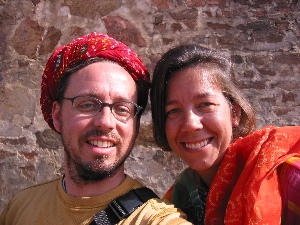 |
These dramatic Janti trees are all throughout
the farmlands. They are nitrogen fixing, so they are good for the
surrounding crops. And they produce nutritious beans as a crop and
leaves as fodder.
|
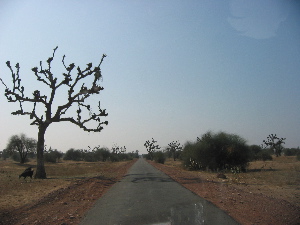 |
Here is a courtyard in a haveli. Most have
three courtyards: a semi-public one, a private one, and one for the
animals.
|
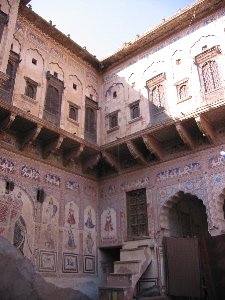 |
We stop in one haveli for
lunch and while it is cooking, we take in the view from the roof. We
have aloo matar (my favorite!), papadam, chapatis, and a sweet wheatgerm
pudding.
|
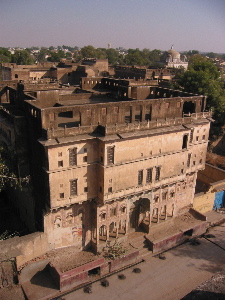 |
The paintings were mostly done in the late
1800's, so they are somewhat faded now and don't photograph well. In
person, they are intricate and lovely.
|
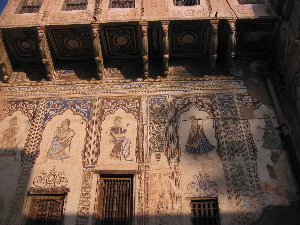 |
The villages in this area were prosperous
stops along the trade route between China, India, and the Middle East
until land trade was eclipsed by sea trade. The traders moved with the
times and became even wealthier in Bombay and Calcutta during the time
of British rule. However, that turned these towns into something like
ghost towns.
|
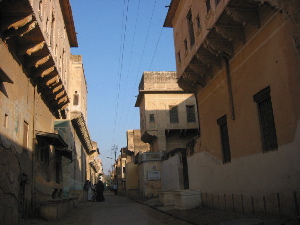 |
One of our last stops is at a cenotaph (a
Hindu tomb modeled after the great Muslim tombs) that is now a school
building. The fading daylight and the clear country air are very
relaxing.
|
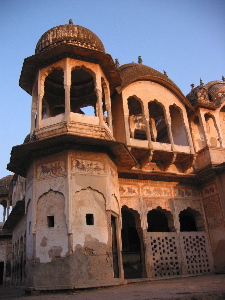 |
|
|
|
|
|
|
|
|













